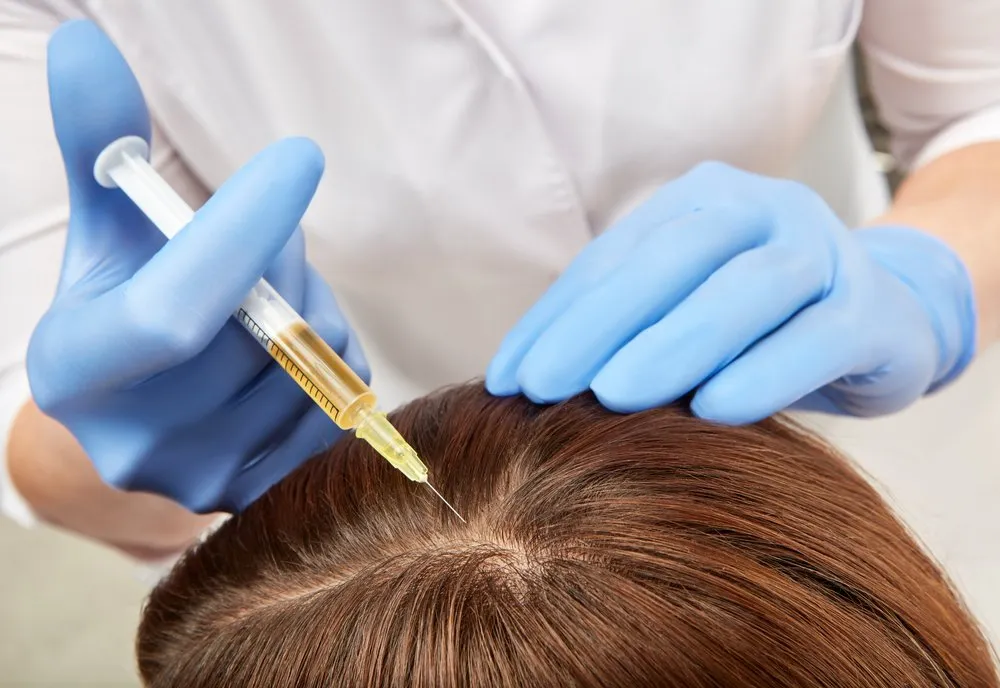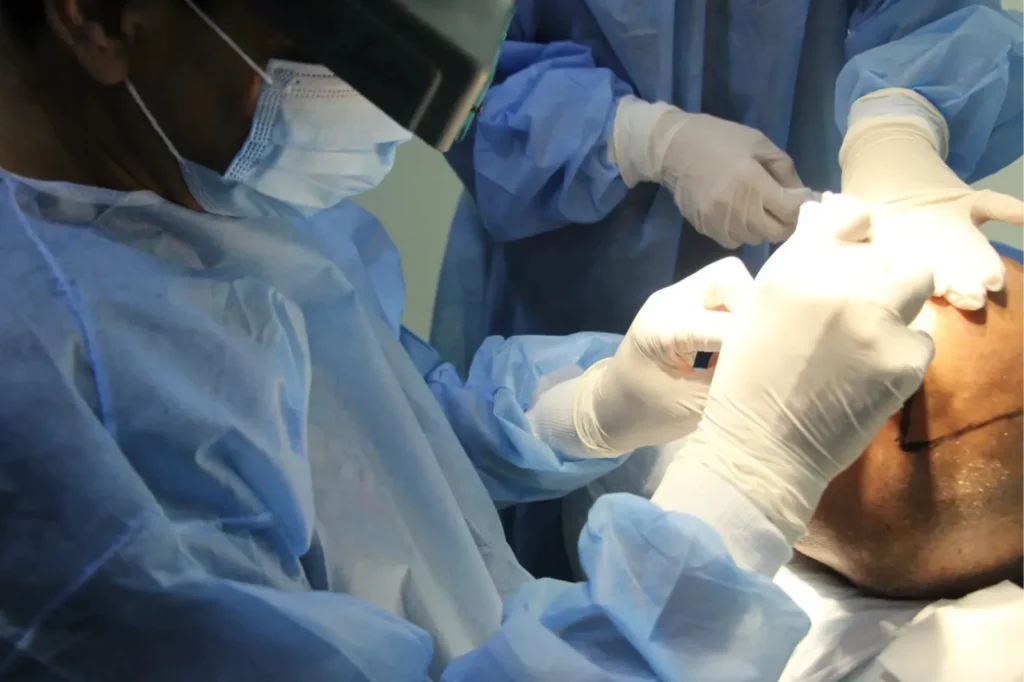If you’re noticing increased hair shedding or thinning, you’re not alone, and you may be exploring new solutions. IV therapy for hair loss is gaining attention as a way to deliver essential nutrients directly into the bloodstream to support follicle health.
This article explains how IV therapy works, who it helps, what science says, and the risks to consider. By the end, you’ll know whether IV therapy is a realistic option for your hair loss journey, backed by expert insight and evidence-based guidance.
What Is IV Therapy for Hair Loss?

What does “IV therapy” mean in hair care
Intravenous (IV) therapy involves administering fluids, vitamins, minerals, and other nutrients directly into the bloodstream through an IV drip. Unlike oral supplements, IV delivery bypasses the digestive system, ensuring faster absorption and higher bioavailability.
In the context of hair health, IV drips are marketed as a way to correct nutrient deficiencies, improve scalp circulation, and strengthen hair follicles from within.
Common nutrient blends and formulations
Popular ingredients in IV drips for hair include:
- Biotin (Vitamin B7): Linked to stronger hair and nail growth.
- Iron: Corrects deficiency-related hair loss.
- Zinc: Supports follicle repair and scalp health.
- Vitamin D: Regulates follicle cycling and immune balance.
- Vitamin C & antioxidants: Reduce oxidative stress.
- Amino acids: Provide building blocks for keratin production.
- B-complex vitamins: Boost energy metabolism and cell renewal.
How IV therapy is supposed to work
- Rapid correction of nutrient deficiencies.
- Increased circulation, potentially delivering nutrients to hair follicles.
- Antioxidant action that may reduce damage to follicle cells.
While this sounds promising, results vary widely depending on the root cause of hair loss.
Causes & Types of Hair Loss That IV Therapy Can Address
Hair loss is not a single condition; it has many causes. Understanding these is essential before starting IV therapy.
Nutritional deficiencies
- Iron deficiency anemia is one of the most common reversible causes of hair loss.
- Protein and amino acid deficiency slow hair growth.
- Low vitamin D or B12 levels can trigger shedding.
IV therapy may help in these cases by replenishing nutrients quickly.
Hormonal causes
- Androgenetic alopecia (male/female pattern baldness): Caused by genetics and hormones (DHT). IV therapy cannot directly alter hormones, so results are limited.
- Thyroid imbalances: Affect hair growth cycles; IV therapy may only provide supportive care.
Other triggers
- Stress and illness (telogen effluvium)
- Autoimmune conditions (alopecia areata)
- Medications (chemotherapy, blood thinners, etc.)
👉 Key takeaway: IV therapy can support nutrient-related hair loss, but it’s not a cure for genetic or scarring alopecia.
What Does the Scientific Research Say?
Clinical studies on IV nutrient infusion & hair outcomes
Currently, direct evidence is limited. Most studies examine oral supplements, not IV delivery. For example:
- A review in Dermatology and Therapy (2019) confirmed that iron, zinc, and vitamin D deficiencies are strongly linked to hair loss.
- Small case reports suggest IV iron may restore hair in patients with anemia, but these are isolated findings.
Comparison: IV vs oral vs procedural treatments
- IV therapy: Rapid correction but requires repeated sessions, medical supervision, and a higher cost.
- Oral supplements: Slower absorption but well-studied, widely available, and cost-effective.
- Procedural treatments (PRP, minoxidil, finasteride, hair transplant): Directly stimulate follicles or restore hair, making them more effective for pattern baldness.

What’s still unknown
- Long-term effectiveness of IV therapy.
- Standardized formulas (different clinics use different blends).
- Whether IV therapy alone can sustain results without addressing underlying causes.
Expected Benefits & Realistic Risks
Benefits
- Rapid nutrient correction for deficiencies.
- May reduce shedding and promote stronger hair.
- Boosts overall energy and wellness in some patients.
- It can complement other treatments like PRP or topical minoxidil.
Risks
- Medical risks: Infection, vein irritation, allergic reaction.
- Overdose risk: Too much iron or fat-soluble vitamins (A, D, E, K) can be toxic.
- Cost: Multiple sessions can become expensive.
- Unrealistic expectations: Not effective for bald patches or genetic hair loss.
Myth vs Reality
- Myth: IV therapy can regrow lost hair.
- Reality: It may support existing follicles if deficiencies are present, but it won’t reverse baldness.
Who Is a Good Candidate?
Diagnostics before treatment
A doctor may recommend lab tests to measure:
- Serum ferritin (iron stores)
- Vitamin D levels
- Thyroid function
- Complete blood count
- B12 and folate
Ideal candidates
- People with confirmed nutrient deficiencies.
- Early hair thinning or diffuse shedding.
- Patients seeking adjunctive care alongside PRP or medications.
Poor candidates
- Longstanding male/female pattern baldness.
- Scarring alopecia (e.g., lichen planopilaris).
- Those with unrealistic expectations of “instant regrowth.”
👉 Pro Tip: Always address the root cause of hair loss first. IV therapy should be supportive, not the sole treatment.
Treatment Process & Timeline
Consultation & testing
- Medical history review, lab work, scalp exam.
- Personalized infusion formula prescribed.
During the IV session
- IV line placed in the arm.
- Infusion lasts 30–60 minutes.
- No downtime afterward.
Frequency & number of sessions
- Usually once weekly for 4–6 weeks.
- Maintenance every 4–6 weeks, depending on results.
Timeline of results
- 4 weeks: Reduction in shedding (if deficiency-related).
- 8–12 weeks: Hair texture may improve, slight thickening.
- 6 months+: Visible density changes (if combined with other therapies).
Choosing a Safe & Credible Provider
Credentials and supervision
- Look for licensed dermatologists or trichologists.
- Avoid “spa-only” providers without medical oversight.
Quality of infusion
- Ask for ingredient lists and sourcing.
- Ensure formulations are tailored to lab results, not generic “cocktails.”
Hygiene & safety
- The clinic should follow strict infection control.
- Single-use needles and sterile conditions are essential.
Transparency
- Clear cost breakdown.
- Honest discussion of benefits vs limitations.
Cost, Accessibility & Practical Considerations
Price range
- Global average: $100–$300 per session.
- Pakistan/Islamabad range: PKR 15,000–30,000 depending on clinic and formula.
Factors influencing cost
- Ingredients used.
- Number of sessions required.
- Provider’s expertise.
- Clinic location and reputation.
Alternatives
- Oral supplementation with a doctor’s guidance.
- Diet optimization (iron-rich foods, lean proteins, leafy greens).
- Standard hair loss treatments like PRP, minoxidil, or transplant.

Comparison table
| Treatment | Works Best For | Timeline | Cost (average) |
|---|---|---|---|
| IV Therapy | Nutrient deficiencies | 1–6 months | $100–300/session |
| Oral Supplements | Mild deficiencies | 3–6 months | $20–50/month |
| PRP | Early pattern baldness | 3–6 months | $300–500/session |
| Hair Transplant | Advanced baldness | Permanent | $1,500–5,000+ |
FAQs
How soon will I see results from IV therapy for hair loss?
Usually, within 1–3 months if deficiency-related.
Can IV therapy regrow hair that’s already lost?
No. It supports existing follicles but cannot regrow hair in bald patches.
Are there side effects?
Mild bruising at the injection site, rare allergic reactions, or nutrient overload if unsupervised.
How many sessions will I need?
Typically 4–6 initially, with maintenance every 4–6 weeks.
Is IV therapy safe?
Yes, if performed under medical supervision with proper screening.
How does IV therapy compare to PRP or minoxidil?
PRP and minoxidil directly stimulate hair follicles, while IV therapy mainly corrects nutrient deficiencies.
Conclusion
IV therapy for hair loss can be a valuable tool, but only when used appropriately. It helps correct deficiencies, may reduce shedding, and can complement other treatments. However, it is not a miracle cure for genetic baldness, and expectations should remain realistic.
👉 If you’re struggling with hair loss, the first step is diagnosis. Lab testing, scalp analysis, and medical guidance are essential before starting any treatment.
Book a consultation with Dr. Rana Irfan in Islamabad today to discover whether IV therapy, PRP, or a personalized hair restoration plan is right for you. Take control of your hair health with expert, medically supervised care.
